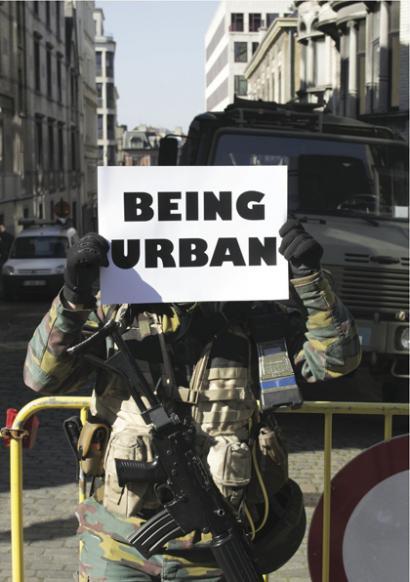
BEING URBAN
A LABORATORY FOR ART IN THE CITY
FROM APRIL 30 TO JULY 4 2015
artworks walks meetings excursions debates rides workshops
Rue aux Laines, Brussels 2015 © Marilyne Coppée |
L'ISELP31 Boulevard de Waterloo
INFORMATION:• Phone: +32 2 504 80 70 OPENING TIMES:Monday - Saturday
ADMISSION PRICE:CONTACTS:• Sophia Wanet (press & communication)
|
|
|
In the exhibition BEING URBAN there are no works of art to see. It's a place of reflection on a subject that cannot be confined: art in public space. How do you define public art? What’s the distinction, for example, between that and street art? “Those are definitions that are constantly being questioned; we are tackling them precisely by establishing a laboratory for raising those questions with a variety of contributors,” says Pauline de La Boulaye, together with Adrien Grimmeau the driving force behind this unusual project. “Here, art in public space means neither the performing arts nor graffiti, but highly specific positions adopted by artists who raise questions about the public environment. It is different from graffiti because it involves the creation of an object or of a medium that is a vector of exchange between the artist and the public.” BEING URBAN concentrates on the post-2000 period. Why? Adrien Grimmeau: There was a real turning point around 2000 in Brussels, which was the cultural capital that year. Until the 1990s, the dominant aesthetic was that of the monument, of the “stone menhir”. Brussels 2000 saw the beginning of new actions in public space that in turn kick-started other initiatives. For example, the King Baudouin Foundation funded several projects in public space linked to the New Patrons’ Protocol [a protocol for artistic production launched in 1990 that gives citizens a role in commissioning works of art, ES], which have been a major influence. Pauline De La Boulaye: You’ll get an overview of what has been done since 2000 via an interactive map with 130 examples. It will be available on the Internet and will be screened at L’iselp. What else will there be to see at L’iselp? Grimmeau : At the heart of the exhibition is the parliament, which hosts at least one intervention a day. You will also be able to listen to radio from the Mental Masonry lab, Cédric Noël and Mira Sanders, who are going to be the archaeologists of L’iselp’s documentation centre. There will also be magazines available and upstairs there will be material from the five test projects we are backing – by Julien Celdran, Stephan Goldrajch, Thomas Laureyssens, Jérôme Giller, Xurxo Durán Sineiro, and Simona Denicolaï & Ivo Provoost, which are in the process of being inserted into public space. How long are these works going to last? De La Boulaye: They are contextual, changing works that depend on participation by the public. They might last a week, like Jérôme Giller’s walk, or a number of years, like Julien Celdran’s stickers. It’s not fixed in advance. Grimmeau : The question of the permanence of the work of art in public space is central to the debate. A year ago, Joëlle Tuerlinckx inaugurated a work in the context of a local urban regeneration plan in Molenbeek: she buried a 14-tonne rock in the middle of the square beside the town hall. It’s probably the biggest piece of sculpture in Brussels, but it’s invisible: all you see is a cobblestone. So it is just a memory. A work can be immaterial and only last in memory and transmission. The first question is: what is art in public space for? Would it be better to have a park instead of a work of art? We don’t want to evade the question. Article written by Estelle Spoto for AGENDA MAGAZINE, Brussels may 2015 |
||

